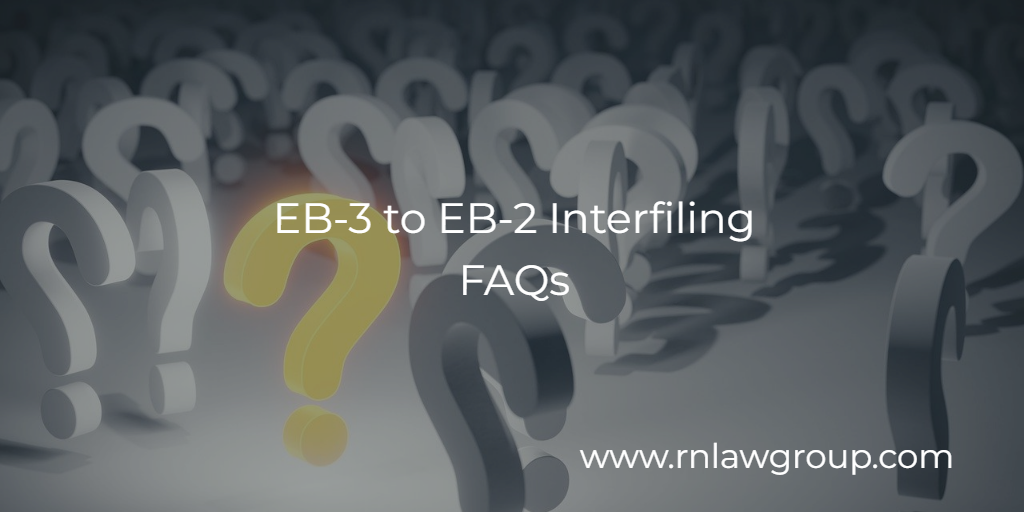
EB-3 to EB-2 Interfiling FAQs
Since January 2022, USCIS has been encouraging applicants of pending I-485 applications in the EB-3 category to transfer the underlying basis of their application to the EB-2 category, if they are eligible to do so. This transfer process, also known as “interfiling,” is now accomplished by the I-140 petitioner filing I-485 supplement J at USCIS’s Western Forms Center, confirming the continuing existence of the EB-2 job offer.
For applicants with a pending I-485 application in the EB-3 category, common considerations about interfiling include:
Does my priority date need to be current in the EB-2 category in order to interfile?
The USCIS guidance states that a visa number must be immediately available in the category to which the I-485 will be transferred, meaning that the applicant’s priority date should be current in the EB-2 category according to the Final Action Dates chart of the Visa Bulletin. The date being current enables USCIS to take action on the case and potentially issue the visa immediately, if all other processing has occurred. In addition, interfiling only when the final action date becomes current minimizes the potential for needing to interfile again at a later date, if dates begin advancing faster for the EB-3 category at some point in the future.
Does my underlying EB-3 I-140 petition need to be approved in order to interfile?
Technically no – the USCIS guidance allows for transferring the basis of the I-485 application from a pending petition to another pending or approved petition. However, even after the I-485 has been transferred to the EB-2 category, it is possible USCIS might not approve the application until the pending EB-3 I-140 petition has been approved or resolved, to ensure that the EB-3 I-140 was not filed fraudulently or frivolously.
Do I need to be in valid non-immigrant status in order to interfile?
No. While valid non-immigrant status would be necessary in order to file a new I-485 application in the EB-2 category, it is not needed in order to interfile. An applicant may therefore transfer the basis of the existing I-485 application from EB-3 to EB-2 if they are no longer in H/L or other status and are using the adjustment-based EAD for work authorization, or the Advance Parole for international travel. However, if the applicant has used the EAD and portability provisions of AC21 to change employers, that may affect their eligibility to interfile (see below).
Do I need to be currently employed by the I-140 petitioner in order to interfile?
Technically not, although it is likely. Interfiling requires continuity of the job offer by the I-140 petitioner, without interruption, which typically exists only if the beneficiary has been continuously employed with the I-140 petitioner. However, since the sponsorship depends on a valid offer of employment, and doesn’t require active current employment, there could be continuing eligibility even when the beneficiary has stopped working for the I-140 petitioner, if the company continues to support the applicant’s green card application by maintaining the job offer. This requires that the I-140 petition not be withdrawn, and that the company attest to the continuing job offer in the I-485 J supplement.
How does interfiling affect my ability to change employers?
The USCIS guidance states that transferring the eligibility basis of the I-485 application re-starts the 180-day clock for purposes of job portability under AC21, meaning a change in employment likely can only occur once 180 days have elapsed from the receipt date on the I-485 J supplement. After that, a new employer would file their own I-485 J supplement confirming that the applicant’s new position is in a “same or similar” occupation as the one described in the EB-2 I-140 petition.
By: Rebecca Chen
Rebecca Chen is a Partner at Reddy & Neumann. Her representation includes advising clients throughout the non-immigrant and immigrant visa application process, from initial filing, responding to various requests for evidence, and processing at overseas consulates. Her years of experience in the immigration field have made her a knowledgeable resource for complex business immigration matters.

